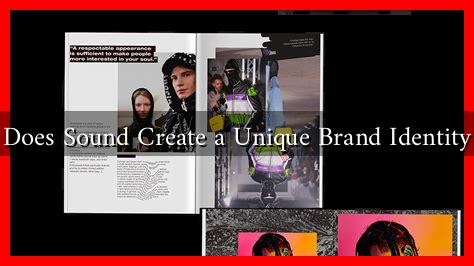-
Table of Contents
Does Sound Create a Unique Brand Identity?
In today’s competitive marketplace, brands are constantly seeking innovative ways to differentiate themselves from their competitors. While visual elements like logos and color schemes have long been recognized as essential components of brand identity, the role of sound is often overlooked. However, sound can significantly influence consumer perception and behavior, creating a unique brand identity that resonates with audiences. This article explores how sound shapes brand identity, supported by examples, case studies, and relevant statistics.
The Power of Sound in Branding
Sound is a powerful tool that can evoke emotions, trigger memories, and influence decision-making. According to a study by the Harvard Business School, sound can enhance brand recall by up to 20%. This phenomenon is often referred to as “sonic branding” or “audio branding,” where brands use specific sounds or music to create a distinct identity.
Elements of Sonic Branding
Sonic branding encompasses various elements that contribute to a brand’s auditory identity. These elements include:
- Jingles: Catchy tunes that are easy to remember and often associated with a brand.
- Sound Logos: Short, distinctive audio clips that represent a brand, similar to a visual logo.
- Brand Voice: The tone and style of spoken communication that reflects the brand’s personality.
- Background Music: Music used in advertisements or in-store environments to create a specific atmosphere.
Case Studies: Brands That Successfully Use Sound
Several brands have effectively harnessed the power of sound to create a unique identity. Here are a few notable examples:
1. McDonald’s
McDonald’s is famous for its iconic jingle, “I’m Lovin’ It.” This catchy tune not only enhances brand recall but also evokes positive emotions associated with the brand. The jingle has become synonymous with McDonald’s, reinforcing its identity as a fun and family-friendly fast-food chain.
2. Intel
The Intel “bong” sound logo is another prime example of effective sonic branding. This simple yet memorable audio cue is instantly recognizable and has become a hallmark of the brand. It signifies quality and innovation, reinforcing Intel’s position as a leader in technology.
3. Coca-Cola
Coca-Cola’s use of sound extends beyond jingles to include the sound of a can opening or the fizz of carbonation. These auditory cues evoke feelings of refreshment and happiness, enhancing the overall brand experience.
The Science Behind Sound and Consumer Behavior
Research indicates that sound can significantly impact consumer behavior. A study published in the Journal of Consumer Research found that background music can influence the amount of time consumers spend in a store and their purchasing decisions. Upbeat music encourages faster shopping, while slower music can lead to more thoughtful purchases.
Creating a Unique Brand Identity Through Sound
To effectively create a unique brand identity through sound, businesses should consider the following strategies:
- Define Brand Personality: Understand the brand’s values and personality to choose appropriate sounds that align with its identity.
- Consistency is Key: Use the same sound elements across various platforms to create a cohesive brand experience.
- Engage with Audiences: Use sound to evoke emotions and connect with consumers on a deeper level.
- Test and Adapt: Continuously gather feedback and analyze the effectiveness of sound elements in branding efforts.
Conclusion
In conclusion, sound plays a crucial role in shaping a unique brand identity. By leveraging sonic branding elements such as jingles, sound logos, and background music, brands can create memorable experiences that resonate with consumers. As demonstrated by successful case studies, sound can evoke emotions, enhance brand recall, and influence purchasing behavior. As businesses continue to explore innovative branding strategies, incorporating sound into their identity will be essential for standing out in a crowded marketplace.

